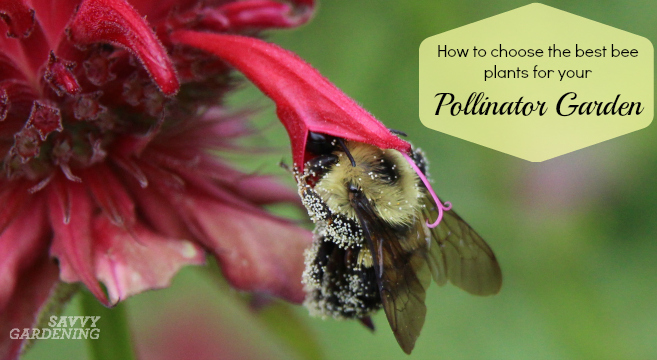
Q: How can I create a bee-friendly garden? – Elisa, Shokan
A: By providing nectar and pollen as food and creating shelters in your garden space, you will create new habitat for bees, which is important, as their natural habitats become less and less abundant.
First choose the right plants. Select a variety of flowers that are most attractive to bees and will bloom at different times throughout the year for a steady supply of nectar and pollen. Exotic plants that produce lots of nectar, like butterfly bush, are great for attracting bees and butterflies into your yard, but they often cannot support the entire life cycle of these insects. By opting for native plants, your garden will be attractive to adult bees that are foraging for nectar and pollen, but will also increase native habitat in your area for other wildlife, like caterpillars and birds.
Goldenrods, Lupines, Columbines, Bee Balm, Milkweeds, Coneflowers, Hyssops and Lobelia are good choices. Most plants with umbral flower heads like dill and Queen Anne’s Lace are good, too. Bees are especially attracted to flowers that are purple, blue or yellow. They do not have the capability to see red and will rarely visit flowers in variations of that primary color. A few red flowers, such as bee balm, attract bees by reflecting ultraviolet light.
Limiting the use of insecticides in your garden ensures that bees that you have invited into the garden are not accidentally poisoned by pesticides not intended for them. Native bees are attracted to your garden by the nectar and pollen, but they come into contact with any other chemicals that may be present. High doses of insecticides can kill foraging bees outright. Even low doses can have adverse effects. Low doses of insecticides can disrupt the innate orientation and navigation skills of the foraging bee, causing it to lose its way back to the nest.
Creating nesting habitats for native bees is surprisingly simple. That’s because many native bees make nests in old pieces of wood, cavities or even in the ground. These nests can be easily replicated with a few supplies and tools. The addition of nesting sites for native bees to your garden will ensure these pollinators will “stick around.”
Q: What can I do to prevent my home peach trees from developing brown rot? – George, New Paltz
A: Brown rot is a destructive fungal disease of trees and shrubs in the genus Prunus, which includes peaches, plum, cherries, apricots and nectarines. Brown rot is particularly a problem on the fruits of susceptible plants, with the potential to cause losses of 50 percent or more prior to harvest. After harvest, additional losses due to the disease are possible if fruits are injured, bruised or stored at warm temperatures with moisture.
Initial symptoms of brown rot often occur in the spring as brown spots on blossoms. Affected blossoms eventually collapse completely, and can produce a gummy material that sticks to twigs leading to infections and subsequent twig dieback. Fruits that develop from healthy flowers can become infected as they mature leading to a brown fruit rot that quickly encompasses an entire fruit. Eventually, affected fruits will dry and shrivel to form “mummies.” Characteristic powdery, gray masses of spores form on the surfaces of both rotting fruits and mummies. As with most fungi, the severity of brown rot is dependent on the weather. Summers with much rainfall and high humidity lead to the greatest disease incidence. The fungus can grow slowly at near-freezing temperatures, but it grows best at about 70-75 degrees F. The fungal spores require free water to germinate and infect tissues and this water may come from rainfall or dew. Periods of 3-5 hours of wetness are required to initiate fruit infection and fruit injured by insects, hail, etc. are more susceptible.
The key to managing this disease in good sanitation.
The first thing is cleaning up any mummified fruit on the tree or the ground. Ideally I should have removed the rotting fruit before it become mummified. The fallen rotten or mummified fruit must be destroyed not composted as you’ll need to try and eliminate the fungal spores from the surrounding area. Remove and destroy any wild or volunteer Prunus trees and shrubs on your property, as well as all rotting and mummified fruits, as these can be reservoirs for brown rot fungi.
If brown rot has been a chronic problem in your garden and the cultural methods discussed above have not proven successful for control, consider using fungicides. Select products that are labeled for use on apricots, cherries, peaches and/or plums. To prevent blossom infections, make one application when approximately 10 percent of flowers are open. To prevent fruit infections, begin making applications three weeks before anticipated harvest, particularly if there is wet weather.
[“Source-recordonline”]










